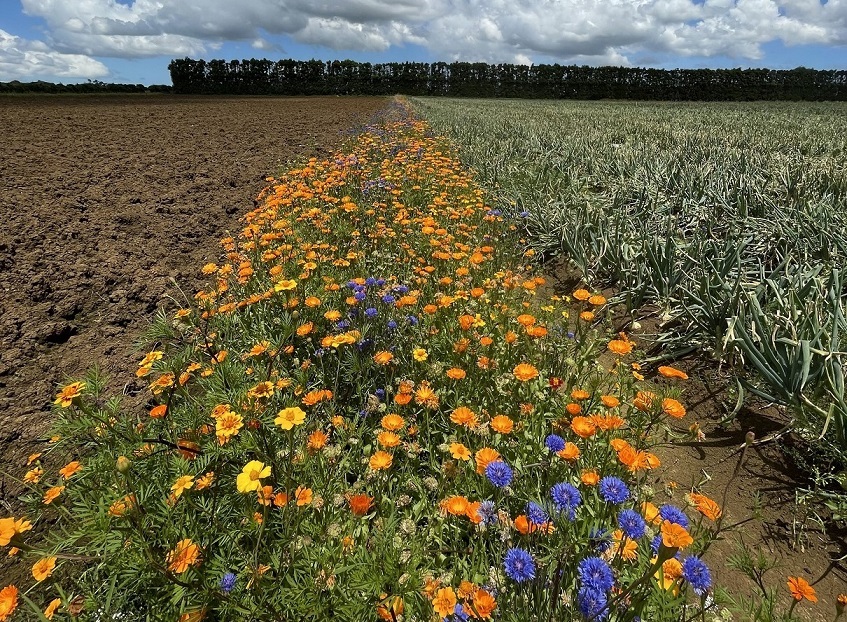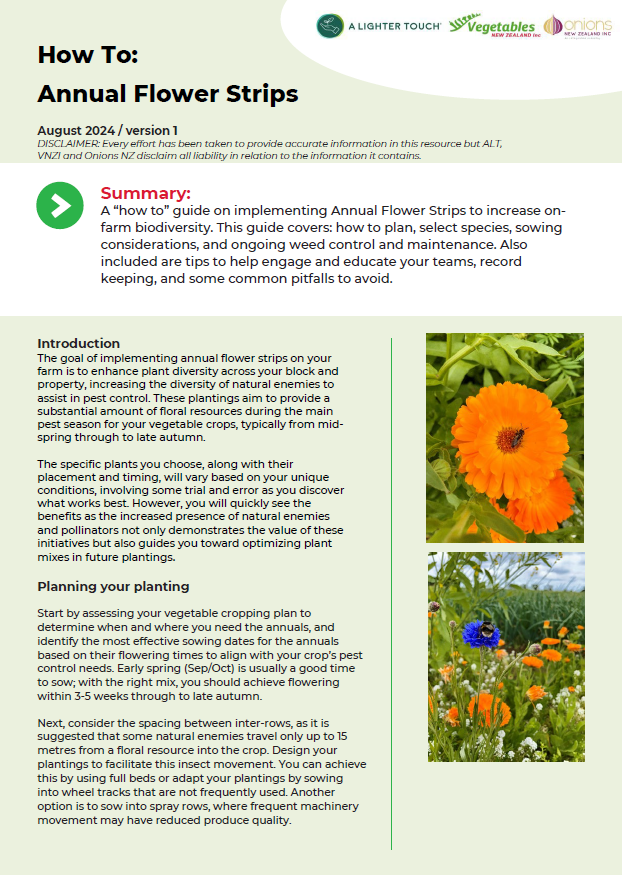An extra six months of flowering in annual strips designed to encourage beneficial insects is one example of season to season learning in the Pukekohe demonstration farm biodiversity project.
The A Lighter Touch-Vegetables New Zealand-Onions New Zealand project has now been in the ground for two seasons, with planting for its third year getting underway.
Project lead Olivia Prouse says the team has learned a great deal in the first two years of the demonstration project, which is designed to provide knowledge and resources for growers to help de-risk establishing biodiverse planting on farm.
Last season two extra species, calendula and marigold, were added to the annual flower strip seed mix to extend the flowering period. In conjunction with a slightly earlier sowing period than the previous season, the addition of these two species extended the flowering period by around six months compared to the original three species of cornflower, alyssum and buckwheat.
“What that means in terms of the beneficial insects is that we are providing more SNAP (shelter, nectar, alternative food and pollen) for them through the winter period,” Olivia says.
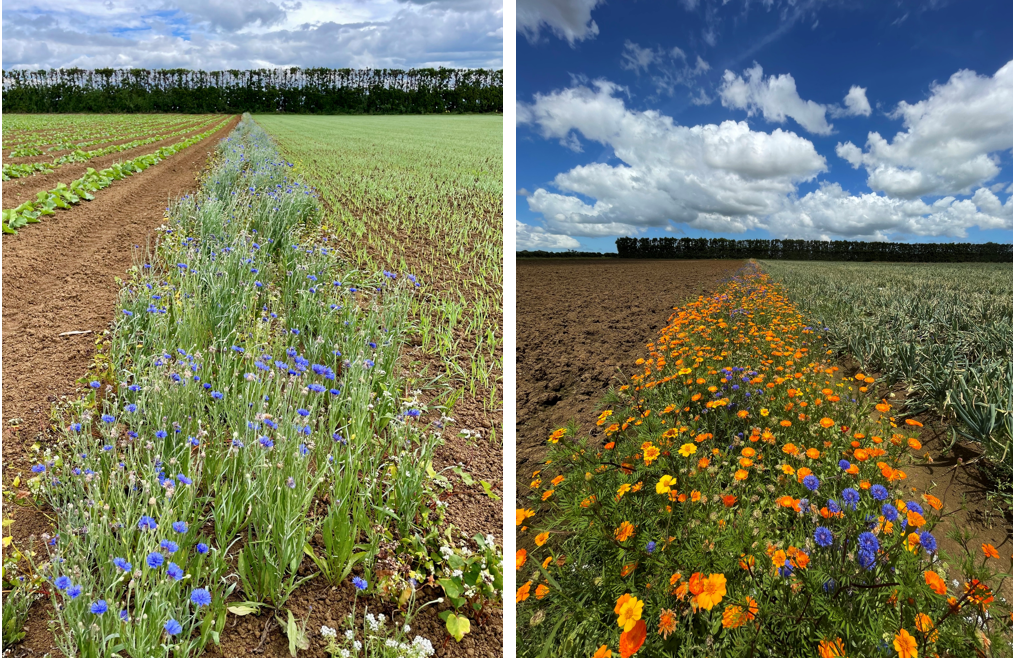
The annual flower strips in January 2023 (left) and in January 2024 (right), following the addition of two extra species to the seed mix. Credit: Olivia Prouse.
The marigolds were the main contributor to the extended flowering period, and led to a change in management, with the annual flower strip being left in longer as it was still growing and flowering well.
“We only worked it in ready for planting again in mid-August, as we were starting planting preparation for the next crops. The previous year everything had died by early April and the weeds were coming through, so we cultivated the annual strip rows earlier for weed control.”
Another learning related to the use of the cover crop for insect control.
“We found that the cover crop on the block helped provide very timely control of aphids in the lettuce crop, enabling us to avoid applying an insecticide spray to bring the pest pressure under control.”
 The mulching of the cover crop caused a large influx of insect predators, such as lacewings, into the lettuce crops. It also raised the potential to consider using cover crops to boost populations of beneficial insects to manage pest pressure on an as required basis.
The mulching of the cover crop caused a large influx of insect predators, such as lacewings, into the lettuce crops. It also raised the potential to consider using cover crops to boost populations of beneficial insects to manage pest pressure on an as required basis.
“If a strip is left of cover crop when the rest of the block is worked up and planted, then if you require an influx of predators in the crop because you are struggling with insect control, it may be possible to mulch in part of the row left standing, causing the predators to move outwards into the crop if they haven’t already done so naturally.
“There is also the possibility that this strip could be available for more applications if only half is mowed at a time, or if the cover crop regrows following its mulch,” Olivia says.
The project has begun producing a series of grower resources, with the first of these, a “how to” guide on implementing annual flower strips available to download on the A Lighter Touch website.
The guide discusses the importance of keeping detailed records of sowing dates, species used, germination success, and flowering periods, and using this data to refine your approach each year, adjusting sowing dates and species mixes based on performance and environmental conditions in your location.
Olivia says recording observations of the flowering times of the annual strips has allowed the project team to identify they could work on extending out the main flowering period with the addition of an extra species, with a gap in nitrogen-fixing species.
“For this season we will be incorporating a crimson clover into the mix to see how this fits in with what we currently have, and to see if it might help bulk the flowering period further.”
In addition to the annual flower strips and cover crops, the biodiversity project also includes native planting in moveable pods, or insectaries, and in non-cropping areas, such as beside drains and waterways.
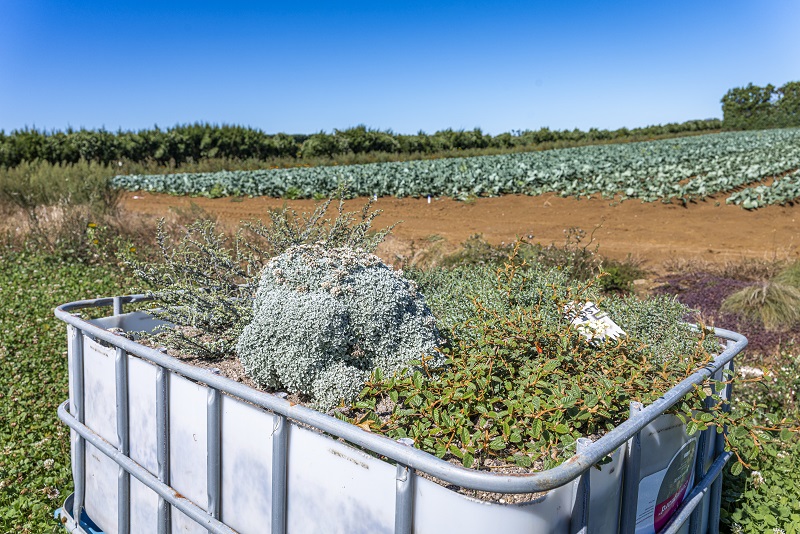
Moveable pods or insectaries are another component of the biodiversity project.
Over the winter and this spring, the flowering native plants have been monitored by Plant and Food Research entomologists to record the natural predators associated with these species. This data will help validate the role of the native permanent planting, which aims to provide a source of food and shelter to support natural predators over winter.
“By providing SNAP through the winter to boost our beneficial populations, when spring arrives we already have some natural predators ready to move into our crops, and we have mobile insectaries, with predators onboard, ready to be deployed into the crops.”
With planting of this season’s annual flower strips and cover crops just around the corner, another factor to consider is timing of planting.
“We’re gradually moving our planting time forward. The first season the strips were planted in early October, then last year we moved planting forward to mid-September.
“This season the plan was to sow in mid-September again as that seems to work well with the species mix we have so far. It also fits in well with getting the annual strip rows worked up as we prepare our bed for the next crop,” Olivia says.
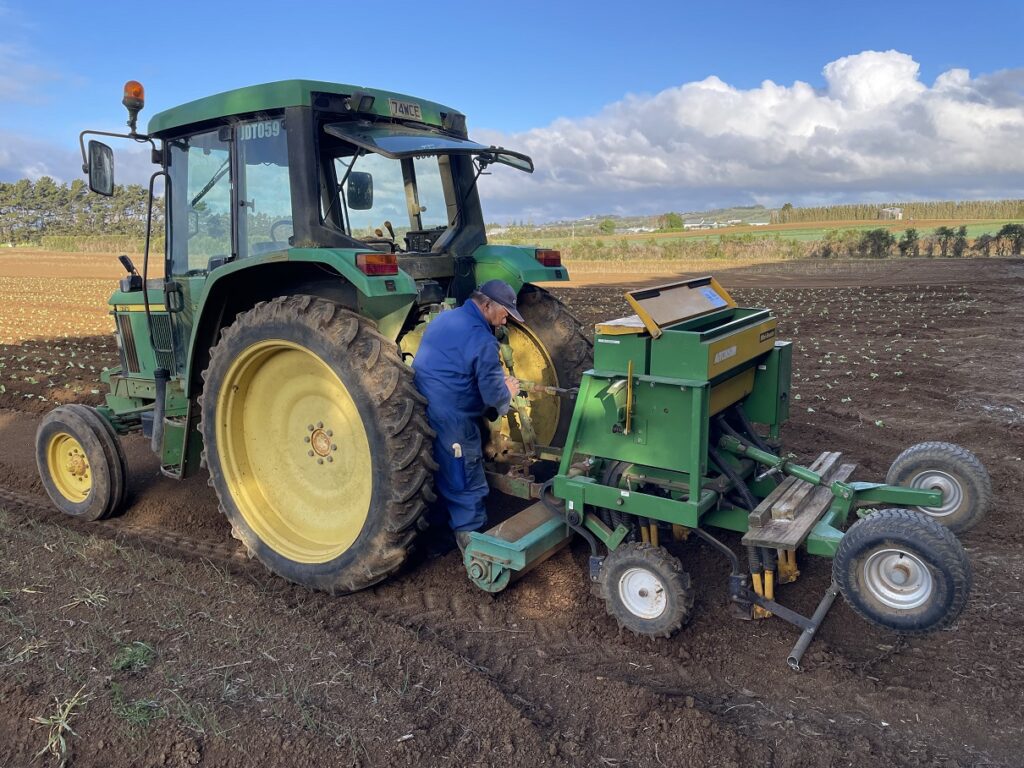
Howe prepares the planter for sowing the annual flower rows at at the demonstration farm. Credit Olivia Prouse.
This season the focus for the biodiversity project team will be on continuing to grow crops under the same conditions, and monitoring the impact of the natural enemies in terms of crop management.
“With the crop monitoring, we’ll be watching to see if we are getting a bigger range of natural enemies and if we are being able to gradually reduce our insecticide applications as the natives in the permanent planting and mobile insectaries start to get bigger size and more established flowering begins to happen.”
The team will also be observing the impact of the change in annual strip mix, with the addition of the crimson clover, for this season.
